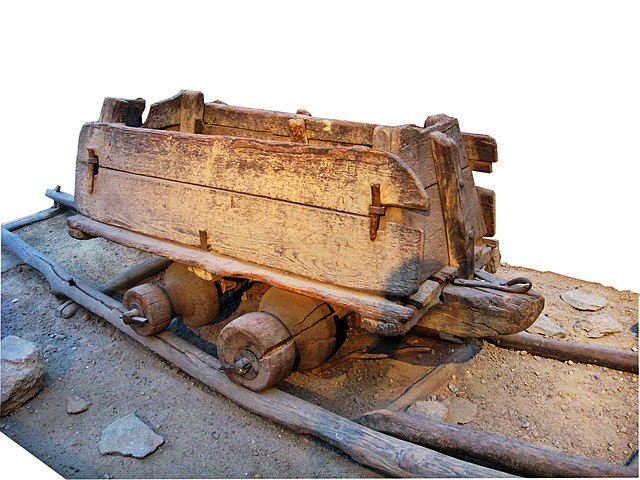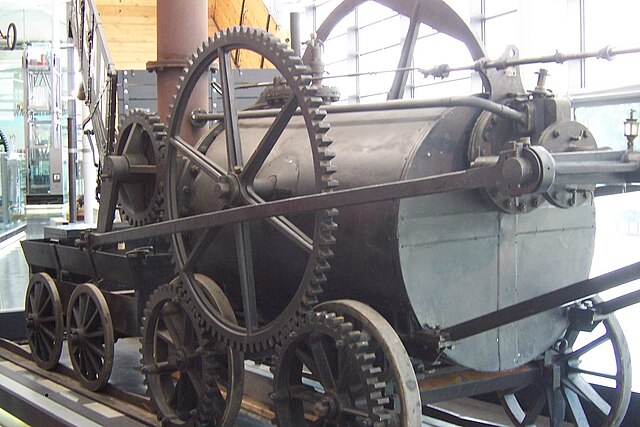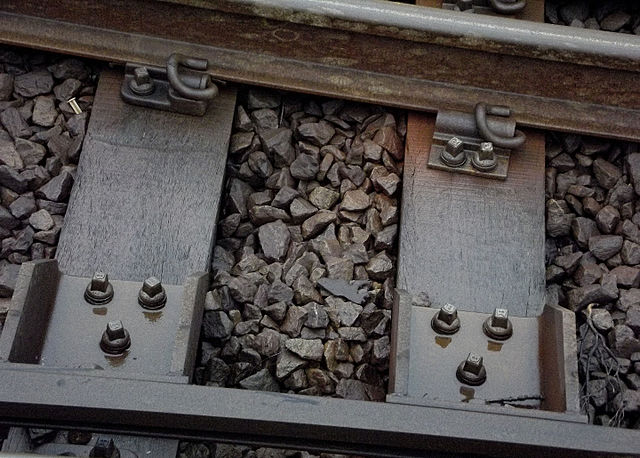Rail transport is a means of transport using wheeled vehicles running in tracks, which usually consist of two parallel steel rails. Rail transport is one of the two primary means of land transport, next to road transport. It is used for about 8% of passenger and freight transport globally, thanks to its energy efficiency and potentially high speed.
A train in Alaska transporting crude oil in March 2006
A 16th-century minecart, an early example of unpowered rail transport
A replica of a "Little Eaton Tramway" wagon; the tracks are plateways.
A replica of Trevithick's engine at the National Waterfront Museum in Swansea, Wales
A railway track or railroad track, also known as a train track or permanent way, is the structure on a railway or railroad consisting of the rails, fasteners, railroad ties and ballast, plus the underlying subgrade. It enables trains to move by providing a dependable surface for their wheels to roll upon. Early tracks were constructed with wooden or cast iron rails, and wooden or stone sleepers; since the 1870s, rails have almost universally been made from steel.
New railway concrete sleeper
Traditional railway track showing ballast, part of sleeper and fixing mechanisms
Track of Singapore LRT
Ballastless high-speed track in China








